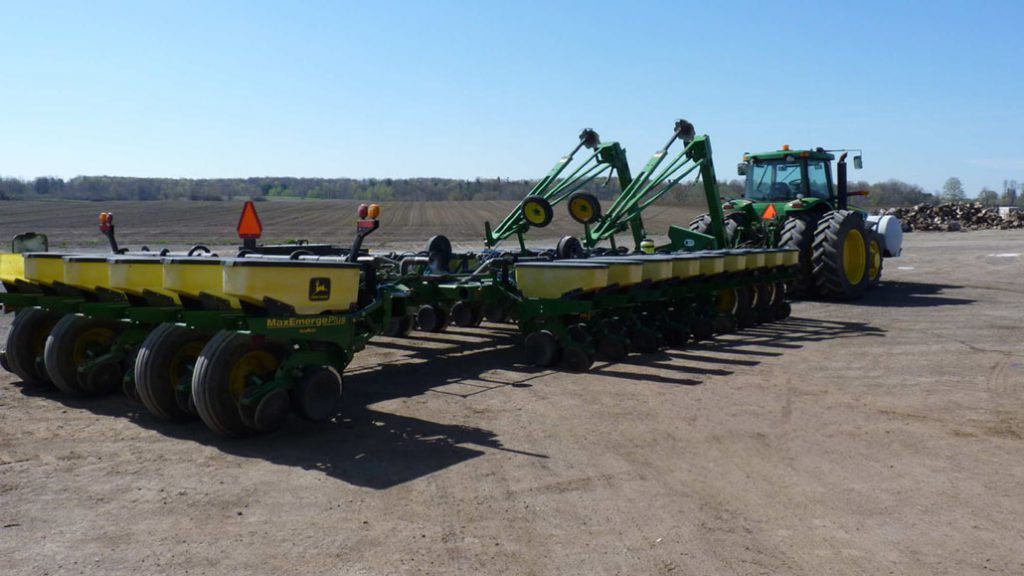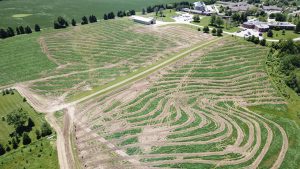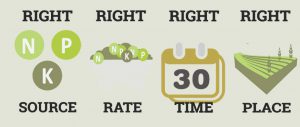Strategic planting
CONSIDERATIONS FOR 2020

THIS SPRING, MANY farmers across North America will be tackling unfinished business from 2019. How did the year end for you? Is there still crop in the field, tillage work that didn’t get done, fall fertilizer applications that were missed?
Many of these issues will need to be addressed as you begin your spring preparation ahead of planting, although some may require alternative solutions.
FIELD PREPARATION
By now you may have all the winter field-stored crop off or are in the process of getting the remaining 2019 crop, if the spring has been favourable. Now is the question what to do with the remaining stubble or rutted field. Managing these concerns will lead to a good planting experience or a very difficult one.
Depending on your planter and field conditions, you may be in a position to just run as no-till this spring. If equipment is not in your shed, consider renting one or borrowing a neighbours to see how it works. If field work is a must, be aware that spring tillage is not the same as fall tillage.
There is a lot less forgiveness in spring tillage, and you need to make sure you are not making the situation worse by working when the ground is unfit.
The higher the clay content the worse it will be. Working wet clay ground with primary deep tillage causes lots of smearing and reduces your soil pores. Don’t smear and compact the soil, it will never let you forget it until the next winters freeze cycle can help you to recondition the soil. Stay off wet soil and consider fixing up the planter and drill to accommodate the stubble.
SEED SELECTION
Most farmers have their seed sitting in the shed, ready to plant. Seed selection occurred last fall when the early booking/payment deadlines approached. But did you get what you had planned for? Is the seed size what you think it is? Be sure you go over the planting plan, list out the hybrids and varieties you physically have. Match them up to the fields you want them on based on agronomic considerations such as herbicide programs or fertility zones.
It is a good idea to write it down, so when the rush hits and a key player like yourself is not available, others can step in and execute your planting plan. Make sure whoever is planting confirms what was planted and where, that way the right herbicide and fungicide programs are applied to the correct fields. You don’t want someone mixing up herbicide traited products such as Enlist and Xtend as you will surely kill the crops if you spray the wrong herbicide on them.
PLANTING
Before you start in the field, make sure you spend the time needed to thoroughly inspect and fix your planter for the 2020 planting. Setting up the planter is a key step in assuring you maintain your maximum yield through stand establishment. Mistakes can cost dearly in down time or in limiting your yield potential.
A short list of items to review includes:
• Check the air pressure and condition of planter tires.
• Check drive chains for free movement.
• Check parallel linkage arms for free, smooth movement up and down.
• Check that planter drive chains are not binding.
• Check gauge wheels.
• Check double disc openers for the correct size and contact points.
• Replace worn seed tube guards and damaged seed tubes.
• Test the accuracy of seed singulation on your row units.
• Make sure closing wheels are freely rolling.
When you think the planter is ready, make a test run and check that the double disc opener is in the middle of the closing wheels and not off to one side. If they are, realign them or check why they are not aligned. Is something bent or broken? Closing wheels need to be centred over the double disc opener so the seed has uniform soil pressure on both sides.
When you start planting, check the level of the planter tool bar. Planters need to run level so the correct pitch is placed on the row unit. A level unit will make the correct V trench with the double disc opener in the correct location in the soil and place the seed uniformly in the bottom of the trench. When the tool bar is not level, the row unit will have too much pitch and will have the disc contact location too far forward or backwards causing the trench to be flat bottom or W shape, this, in turn, causes seed placement to be sporadic.
When in the field, check your down force by checking the gauge wheels and adjust as required for the conditions. Too much pressure that prevents you from rotating the gauge wheels will also cause excess wear and tear on the equipment and puts too much pressure on the seed trench leading to side wall compaction. If the gauge wheels run too freely, then there is not enough down force to actually position the row unit and the unit will float causing uneven planting depths. Gauge wheels should be snug, not tight or loose.
Uniform seed placement is the goal of your finely tuned planter. In order to make sure the planter is operating properly, do a few field checks for seed placement in the row. Is it at the right depth? Does it have proper seed to soil contact? Is there enough soil moisture at this depth? Is the fertilizer placement correct? If not, make the adjustments for your conditions so you can maximize your crop potential. If the planter is bouncing in the field, slow down as all the excessive movement and vibration not only places the seed at variable depths, but can also cause seeds to be dislodged from your singulator — creating skips in the field.
WEED MANAGEMENT
Be aware of the weed species you need to manage field by field. If you have identified resistant weeds or know one is in the area, make sure your weed strategy includes multiple modes of action and methods of weed control to prevent weed escapes on your farm. Relying on a single method or single mode of action will give you weed headaches. Be selective of your seed hybrids and varieties and use the proper herbicide to avoid crop injury.
GRAIN MARKETING
Even though it’s spring and we are ready to go, we need to have one eye on the markets and take advantage of any seasonal weather markets as planting progresses.
I hope the 2020 planting season is better than 2019, remember to be safe and adjust for the conditions.
Check out this article for more detailed information on planter set-up.
Marty Vermey is Grain Farmers of Ontario’s senior agronomist. •


























